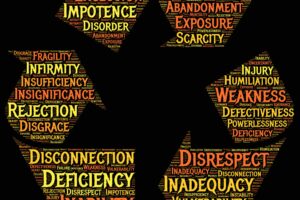Virtually real —
We see it just as it is,
Sitting with fixed gaze

ALL REALITY IS VIRTUAL
In Zen, it has long been accepted or received wisdom that what we perceive as reality is actually a construction. Our process in zazen is one of deconstructing the senses, which, not coincidentally, is the title of the longest chapter in my book, The Original Frontier, to be released this January (and available for pre-order on Amazon.com). But Zen is not the only field that recognizes this ancient truth. It is also being demonstrated by modern scientific experiment.
One of our affiliate practice leaders sent me an interesting article online. It turned out to be interesting indeed, as a modern approach to challenging the evidence of our senses, generally the basis of the empirical method, usually synonymous with scientific method. Quoting briefly from the text:
“It’s really important to understand we’re not seeing reality,” says neuroscientist Patrick Cavanagh, a research professor at Dartmouth College and a senior fellow at Glendon College in Canada. “We’re seeing a story that’s being created for us.”
Most of the time, the story our brains generate matches the real, physical world — but not always. Our brains also unconsciously bend our perception of reality to meet our desires or expectations. And they fill in gaps using our past experiences.
All of this can bias us. Visual illusions present clear and interesting challenges for how we live: How do we know what’s real? And once we know the extent of our brain’s limits, how do we live with more humility — and think with greater care about our perceptions?
One of the classic examples of optical illusions included is the ambiguous horse-seal figure. This is familiar territory in design thinking as well as psychiatry and brain science, but with the advanced animated graphics, they are able to illustrate the illusions more vividly than the older static examples.
Where this lives in Buddhist mind science, or Zen, is at the juncture of the middle Skandha, Perception, which bridges the two material aggregates, Form and Sensation, with the immaterial ones of Mental Formations, a.k.a. impulse, motivation or desire, and Consciousness itself. The monkey-mind conjoined twin of Perception is conception, or thought, which comes to effect perception in our consciousness. Stillness, particularly when amplified by the fixed gaze in zazen, pushes that envelope until something has to give. When it does, the whole construct of the self comes crashing down. This is what is known as insight, into the emptiness of the constructed self.
You don’t have demonstrations of optical illusions if you pay close attention to your vision in zazen. Same for the senses of sound & tactility, which manifest on lower levels of the electromagnetic spectrum. Sitting still enough for long enough reverses this natural process of sensory adaptation, eventually. The lines in the Heart Sutra: “Given emptiness no eye, no ear, no nose, no tongue, no body, no mind; no seeing, no hearing, no smelling, no tasting, no touching, no thinking; no realm of sight no realm of mind-consciousness” are pointing to. Read the “Surangama Sutra” for more detail from Buddha himself. Along with optical illusion there is audio illusion and tactile illusion. Smell and taste are in there too, but they adapt immediately. The last of the Six Senses in Buddhism being thinking, there is finally mental illusion, distorted sense-data of the brain itself, to be overcome in zazen.
Also, for further study read the article and look at the animated examples. This is parallel to our approach to studying the mind directly in zazen. Then the next time you are in sitting in zazen:
LOOK – LOOK – LOOK!
LISTEN – LISTEN – LISTEN!
FEEL – FEEL – FEEL!
NONTHINK – NONTHINK – NONTHINK!

Elliston-sensei is the Atlanta Soto Zen Center’s spiritual leader.








